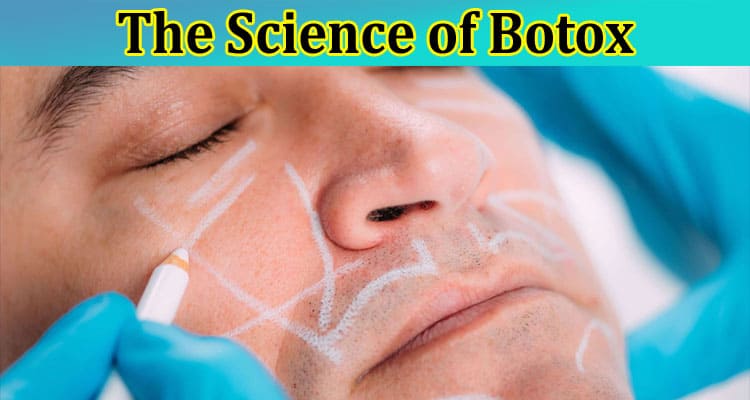In the quest for youthful and vibrant skin, many individuals turn to Botox as a go-to solution. Botox, short for Botulinum Toxin, is a well-known cosmetic treatment that has transformed the field of aesthetics. It has become synonymous with wrinkle reduction and has significantly restored confidence for millions of individuals. When searching for effective rejuvenation methods, people often explore options like “Botox near me” to find accessible solutions that cater to their desires for a refreshed appearance. This article delves into the science behind this treatment, explaining how it smooths wrinkles and rejuvenates one’s appearance.
Understanding the Basics:
Before diving into the science of Botox, let’s clarify what it is. It is derived from the neurotoxin found in the bacterium Clostridium botulinum. Its purified form is used as a cosmetic and medical treatment. When administered to particular facial muscles, Botox induces a temporary state of relaxation within them, resulting in the diminishment of wrinkles and fine lines. But how does this happen? Let’s explore the science.
The Role of Neurotransmitters: A Key to Muscle Movement
The science behind Botox centers on the interaction between neurotransmitters and muscle movement. The brain sends signals to the muscles to contract, allowing them to make facial expressions, such as smiling or frowning. These signals are transmitted by neurotransmitters, which are chemical messengers.
The Botox Intervention: Blocking Neurotransmitter Release
Botox acts as a neuromodulator, interfering with the transmission of signals from nerves to muscles. It does this by inhibiting the release of a neurotransmitter called acetylcholine. Acetylcholine is responsible for telling the muscles to contract. The affected muscle becomes temporarily paralyzed or weakened when its release is blocked.
Precision and Safety: Administering Botox Injections
Botox injections are administered with precision by a trained healthcare provider. A tiny amount of Botox is strategically injected into specific facial muscles, targeting areas where wrinkles and lines are most prominent. The treatment is typically minimally invasive and generally well-received by patients.
The Effects: Smoothing Wrinkles and Fine Lines
Once injected, Botox gradually begins to take effect over the course of several days. As the targeted muscles relax and become less active, the skin’s surface smoothens. Wrinkles and fine lines, particularly those caused by repetitive facial movements, become less noticeable, providing a more youthful and rested appearance.
Duration of Results: Temporary but Effective
It’s important to note that the effects of the treatment are temporary. Over time, the treated muscles gradually regain their activity, and wrinkles may reappear. However, the duration of results varies from person to person but typically lasts about three to six months. To maintain the desired appearance, individuals often schedule periodic treatments.
Beyond Aesthetics: Medical Uses of Botox
While Botox is widely celebrated for its cosmetic benefits, its applications extend far beyond aesthetics. The same mechanism that allows Botox to relax muscles and reduce wrinkles also makes it valuable in treating various medical conditions.
1. Chronic Migraines
It has gained approval for the treatment of chronic migraines. By targeting specific trigger points in the head and neck, Botox can reduce the frequency and severity of migraine headaches, relieving those suffering from this debilitating condition.
2. Muscle Spasms and Disorders
It treats muscle spasms, dystonia (a neurological movement disorder), and spasticity caused by conditions like cerebral palsy and multiple sclerosis. It can provide relief by relaxing overly active muscles and alleviating discomfort.
3. Hyperhidrosis (Excessive Sweating)
Excessive sweating, or hyperhidrosis, can be a significant source of embarrassment and discomfort. Botox injections in the armpits or other sweat-prone areas can block the nerve signals responsible for excessive sweating, effectively reducing perspiration.
The Importance of Choosing a Qualified Provider
Whether seeking Botox for cosmetic or medical reasons, choosing a qualified and experienced healthcare provider is paramount. An experienced practitioner understands the intricacies of Botox administration, ensuring safety and optimal results. Additionally, they can help individuals determine the most suitable treatment plan based on their unique goals and needs. When searching for “Botox near me,” it’s essential to prioritize reputable and well-trained professionals in your area to ensure a successful and satisfying Botox experience.
The Future of Botox: Advancements on the Horizon
As the science of Botox continues to captivate researchers and medical professionals, the future holds promising advancements. Scientists are exploring innovative ways to enhance the effectiveness and duration of Botox treatments. This includes developing longer-lasting formulations and refining injection techniques for more precise and targeted results.
Conclusion:
Botox, often celebrated for its aesthetic benefits, is a testament to the remarkable intersection of science and beauty. It has revolutionized the approach to addressing wrinkles and fine lines by temporarily relaxing muscles through inhibiting neurotransmitter release. Moreover, Botox’s expanding applications in the medical field demonstrate its versatility and potential to improve the quality of life for individuals facing various conditions.
As Botox continues to evolve and be explored for new possibilities, one thing remains constant: the restored confidence it offers to those who choose it as a means to enhance their appearance or alleviate medical issues. In the hands of skilled practitioners, Botox is not merely a cosmetic treatment; it’s a science that empowers individuals to look and feel their best, inside and out.








